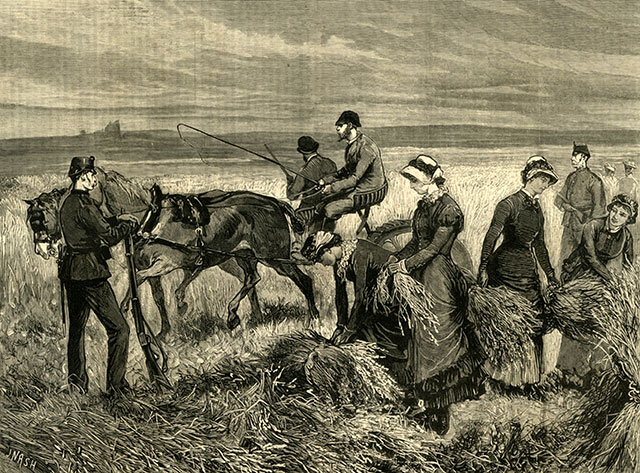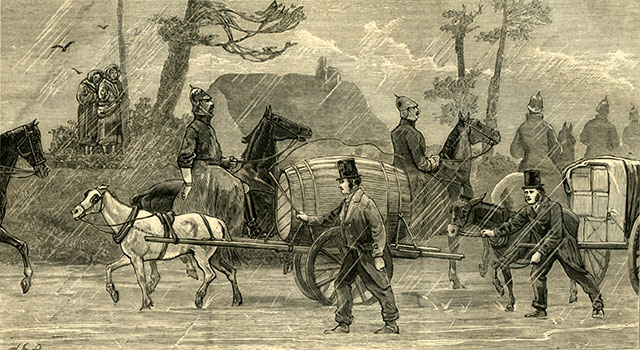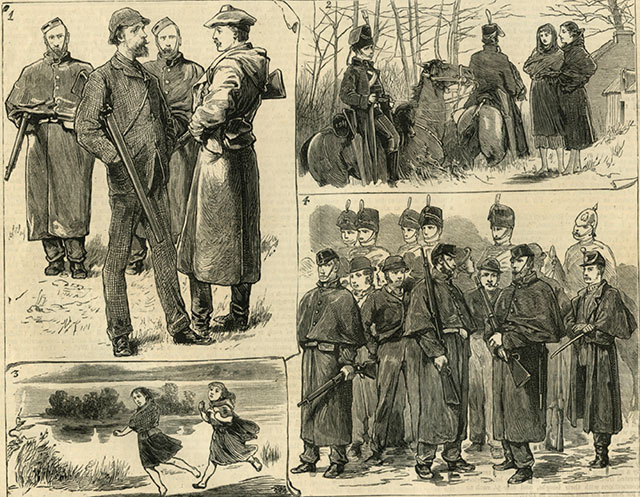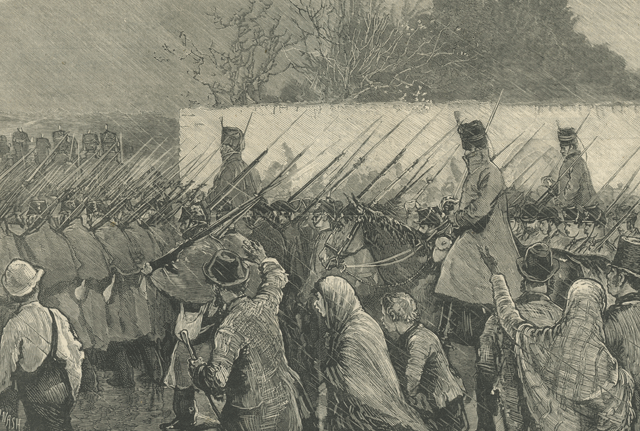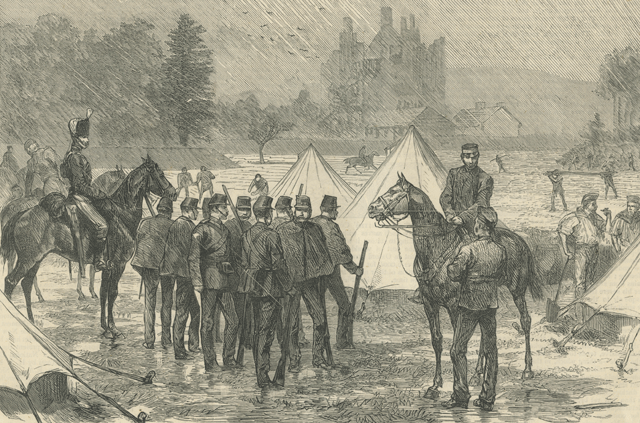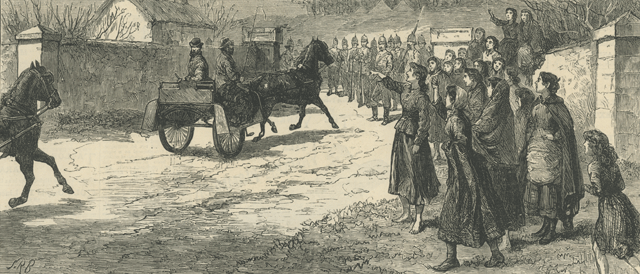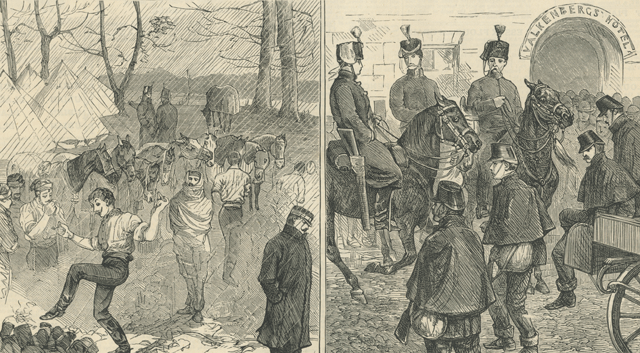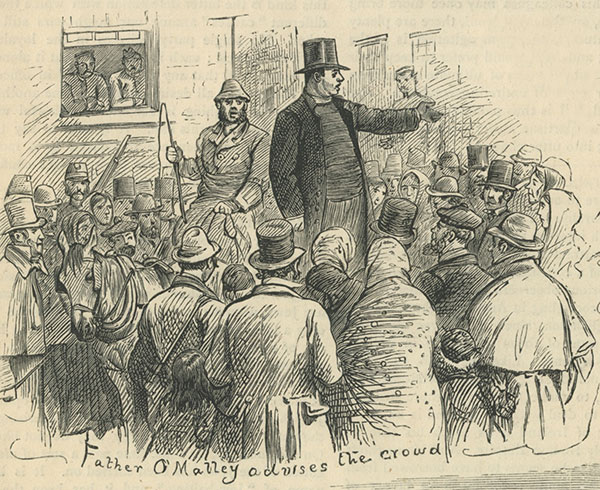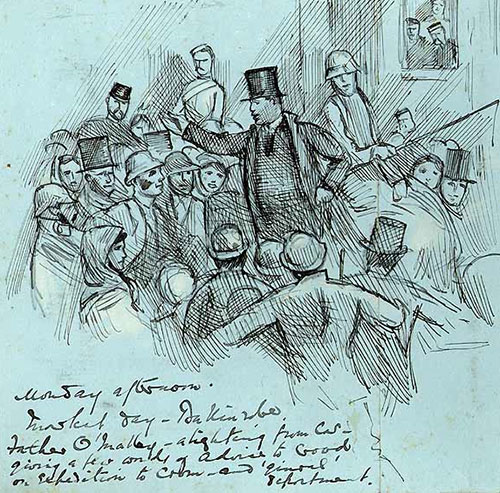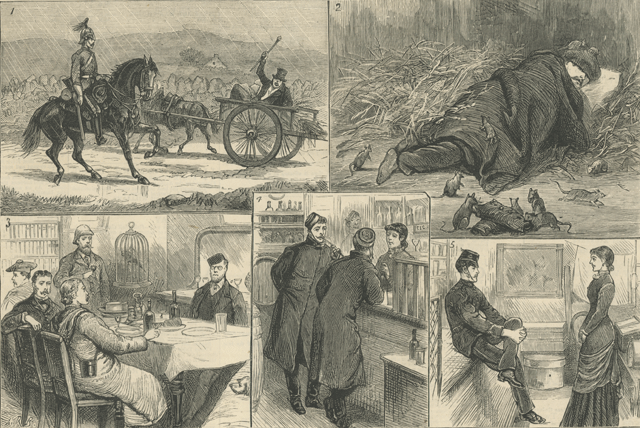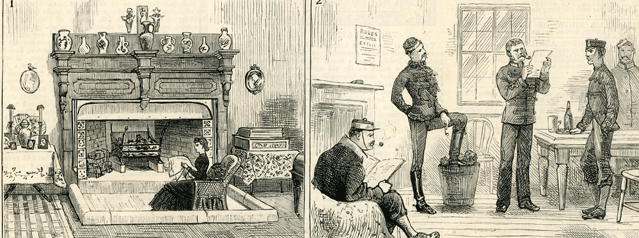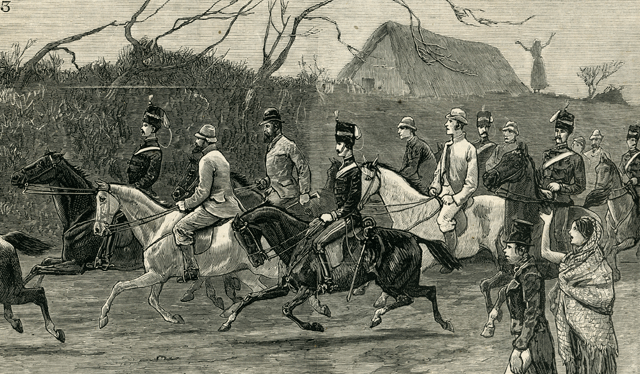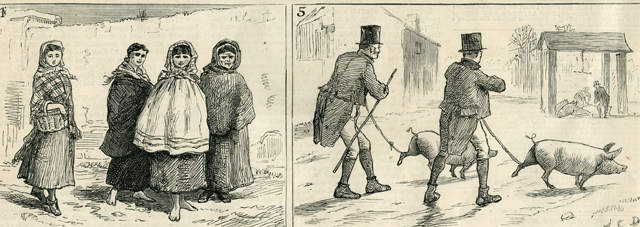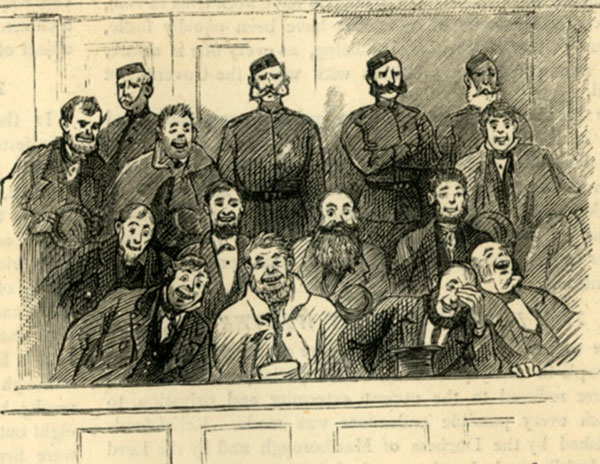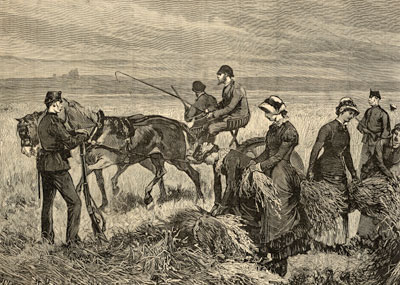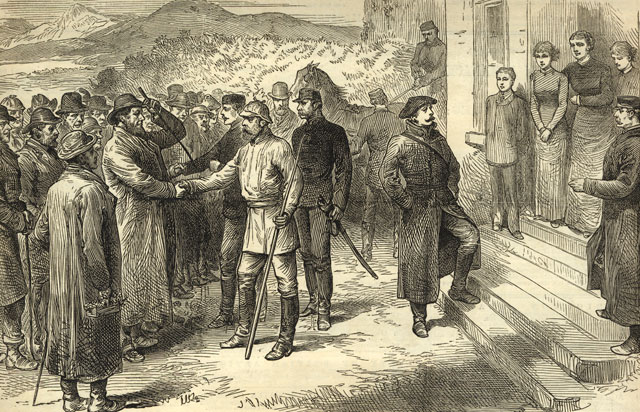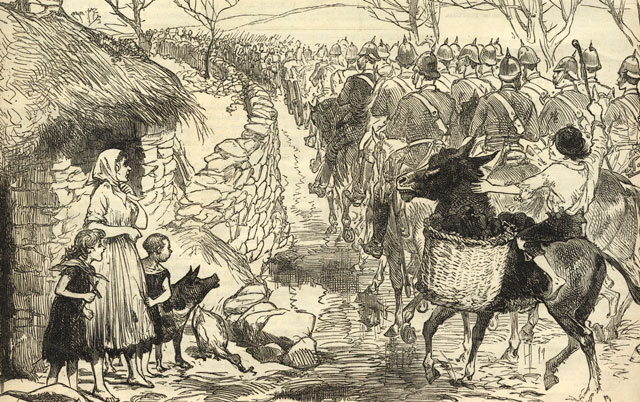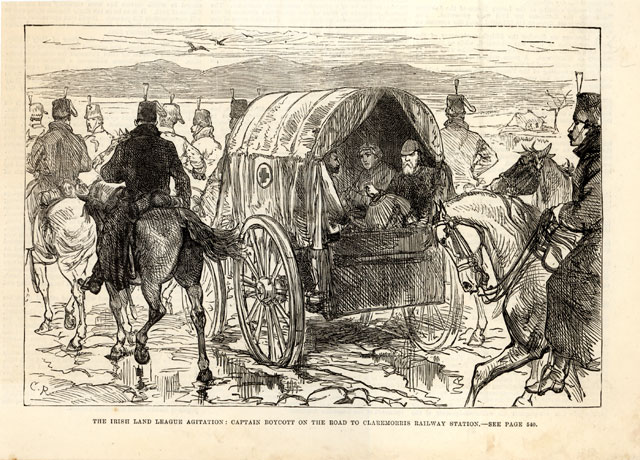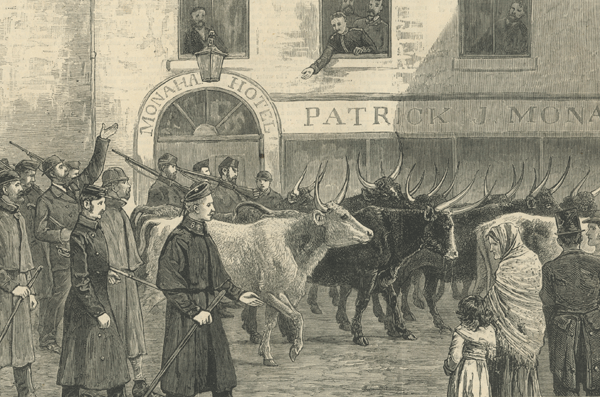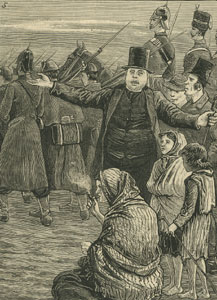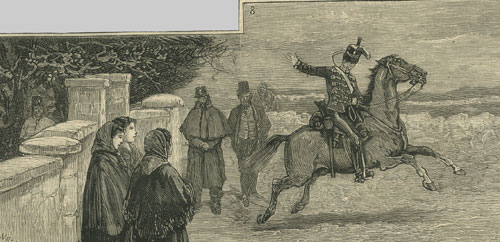| Captain Boycott
The word, boycott, meaning to join with others in refusing to have any dealings
with some other individual or group, is derived from an incident that occurred at Lough
Mask House near Ballinrobe, County Mayo, Ireland in 1880.
Captain Charles Cunningham Boycott was an unpopular English landlord who moved to the
Ballinrobe area in 1873 after an inheritance allowed him to take a thirty-one year
lease on three hundred acres near Lough Mask. He also became an agent on
the nearly one thousand five hundred acres estate of Lord Erne. There were 38 small tenant
farmers on Lord Erne's estates near Lough Mask and Castlebar.
Captain Boycott was reportedly very strict with his tenants. Locally he
was considered a petty tyrant.
Tenants had been used to collecting fallen wood and taking short cuts across the farm. Boycott
curtailed these privileges that had previously been enjoyed. He showed no leniency when rents were in arrears.
Times were hard in 1879 and 1880 and there was again famine. Boycott, with instructions from
Lord Erne, was prepared to allow a 10% reduction in the rents. Most of the tenants insisted on a
25% reduction. Boycott obtained eviction notices against eleven tenants for failure
to pay their rent. On September 22, 1880 the local process server, David Sears*, accompanied by
an escort of "constabulary" succeeded in serving several notices. Then some local women
started to harass Sears and his escort by throwing mud and manure at them while yelling and shouting
at them. The ladies managed to intimidate them to the point that they took shelter
in the Boycott house and were unable to serve the rest of the notices. The next day
Sears was preparing to make another attempt to serve the notices but a large group of
people gathered and marched towards Lough Mask House. Egged on by Father John O'Malley, the parish
priest at the Neale, they arrived on the Boycott farm and "advised" all of Boycott's
servants and farm workers to leave and not return. By the evening of September 23 Boycott and his family
were alone on the farm.
Once the process started it did not stop. The letterboy refused
to deliver the mail. The shopkeepers of Ballinrobe refused to wait on the Boycott family. All of
the local Catholic
population refused to provide any services.
Whenever any member of the Boycott household tried to leave the property they were booed and hissed.
Boycott applied and was granted police protection. This, in and of itself, was not uncommon
in parts of Ireland where there was unrest. The issue at this point remained a local one.
The tenants appealed to Lord Erne to dismiss Boycott and replace him with another agent.
Lord Erne, who was elderly and perhaps senile, refused. The locals kept up their isolation
of Boycott.
A letter from Captain Boycott to the "Times" drew attention to his dilemma. In part he said:
".....people collect in crowds upon my farm and order off all my workmen. The
shopkeepers have been warned to stop all supplies to my house. My farm is public property,
I can get no workmen to do anything, and my ruin is openly avowed as the object of
the Land League unless I throw up everything and leave the country"
The situation became an item in the English press and in response a group of about 50 Ulster
Loyalists volunteered to come to Boycott's aid and bring in his crops. Most of these men were from
counties Monaghan and Cavan. They joined forces at Mullingar, in West Meath.
The exceleration of the situation was carried in newspapers all over the world.
The Brooklyn Eagle reported on November 9, 1880:
"DUBLIN
Four troops of Hussars were dispatched hence for Ballinrobe by special trains at 2 o'clock this morning.
Four hundred infantry have just arrived at
Ballinrobe, and will encamp near Lough Mask.
These precautions are taken in view of the intention of the
Northern Orangemen to send laborers to harvest the crops
of Mr. Boycott, Lord Erne's agent, for whom the local peasantry, at the instigation of the
Land League, refuse to work.
The Government will protect a moderate force of laborers, but refuse to
furnish anything approaching armed demonstrations, which would certain provoke a collision."
The Ulster volunteers (emergency men) took the train as far as Claremorris where they had expected to be met by
carts that would take them to
Ballinrobe.
The local cart drivers refused to provide their services and the
volunteers, escorted my military troops, were forced to march the fourteen miles from Claremorris to
Ballinrobe. They
set off late in the afternoon. Darkness fell early at that time of the year. Hindered
by driving rain and various delays the marched for fives hours before they reached
Ballinrobe. They were greeted by crowds of cat calling, jeering, and booing locals.
There was little shelter or food available for them.
The town of Ballinrobe was completely overrun with outsiders
including at least a 1,000 soldiers, newsmen from around the world and the Ulster volunteers.
On the morning of November 12, the troops, with swords raised, escorted the volunteers out of
town as the locals again turned out to jeer. The crowds thinned as the volunteers left town
and continued on
through the drizzling rain the three miles
to Lough Mask House.
Over the next two weeks, tortured by continuous cold and torrential rains, the volunteers
brought in the harvest of turnips, mangolds1, potatoes and corn2. On Saturday, November 27
they were escorted back to Ballinrobe where they again spent the night. The next day they were escorted to
Claremorris to take the train back to Ulster.
Boycott himself quietly decided to go back to England.
Captain Boycott, his wife and niece were forced to ride in an Army ambulance as no local
drivers could be found to take them to the train in Claremorris.
"The total cost of the Boycott relief expedition was $10,000." (New York Times November 30, 1880
See
Ballinrobe Chronicles for local coverage of the event.
The name boycott was given to this form of social and economic isolation by the American
journalist,
James Redpath, who covered the story for the American press. He credited Father O'Malley with having
come with the idea of using the word.
1Mangolds are a beet like root crop fed to cattle.
2 What the English call corn and Americans call wheat.
*David Sears
In October 2008 John C Sears wrote:
My great-great grandfather was David Sears, the local process server from Ballinrobe. It was he who was pelted with "gutter" when attempts to serve eviction notices were refused. I've worked hard to gather the newspaper articles extant which described the scene and the following day. There aren't many as you've no doubt realized also.
That "Davy" continued to reside in Ballinrobe until his death (aged 74) in 1894.
In accordance with THE BALLINROBE CHRONICLE (sometimes known as the MAYO ADVERTISER),
David had been elected the Process Server since at least as early as 31 October 1867.
He is identified as such, in every edition up to and including 22 December 1894.
He died just prior.
His son, also named David Sears (my great grandfather) had emmigrated in 1891 and was
resident in NYC at that time. Although I know a great deal about the incident now,
no mention was ever made within the family nor were any hints passed down.
David (the son) was married in 1895 and my grandfather was his first child.
He died very young (aged 39), in 1911.
When I learned of the boycott incident, I had conflicted feelings.
My perception of anyone involved in the "eviction process" was negative.
I am and have always been proud of my Irish heritage and was ashamed of what had happened.
As I began research into the details, I learned that my SEARS ancestry also
included people who had materially affected the cause of Irish Independence as well.
I was obviously happy about that.
William Frederick Sears was elected as the South Mayo member of the
First Irish Dail in 1918. He continued as such until June 1927.
Peter Sears was killed on 28 June 1920 in Solon, India while participating in
a Mutiny against the English Army in protest of England's treatment of the Irish.
This was at the height of the Black and Tan War. In October 1970, his body
was returned to Ireland and was re-interred in a Republican grave in Glasnevin
cemetery in Dublin. Edward I. Sears attended Trinity College and after
immigrating to NYC, he started a very successful publishing concern
(The National Quarterly). This publication exposed many of the problems
involving England's control of Irish lands.
George Monaghan - Cavan Volunteer
In June 2017 George Monaghan wrote that his grandfather, also named George Monaghan, was
one of the Ulster volunteers to help save Boycotts crops.
Colonel Jesse Lloyd J. P., of Ballyleck, Co. Monaghan
and chief agent for Lord Rossmore*, was the leader of the "Boycott Expedition".
*Derrick Warner William Westenra, Lord Rossmore, 5th Baron Rossmore, was born in Dublin
in 1853, became Lord Rossmore in
1874 and married 1882.
Things I Can Tell
By Derrick Warner William Westenra Rossmore (5th Baron)
In February 1881 silver commemorative metals
were awarded by Lord Rossmore to members of the "Boycott Expedition".
The men awarded the medal, as listed in the Belfast Newsletter of 15 November 1880, were:
THE MONAGHAN CONTINGENT: James Carson, Monaghan, Joseph Porter, Monaghan, Robert Stewart,
Monaghan, John Stewart Jun., Monaghan, Thomas Kerr, Monaghan, Joseph Wilson,
Monaghan, William Wade, Monaghan, William Gillanders, Monaghan, Richard Tweedy,
Monaghan, James Mills, Milltown, William Wilson, Milltown, Isaac Nesbitt, Milltown,
Thomas Moorhead, Milltown, Jas. Jeffers, Rossmore, William Madden, Rossmore, Samuel Gordon,
Rossmore, Robert McBride, Tullykevin, Andrew McWilliams, Emyvale, David Boyd, Crosses,
Thomas Graham, Crosses, William Smith, Ballinagall, John A. Hazlett, Anvagola,
Joseph Miller, Killygavna, William McCoy, Carragh, Joseph McCormick, Aghaboy,
Samuel Bateson, Strahan, Samuel Adams, CorJatt, Robert Hanna, Killydonnelly,
Robert Thomas Hanna, Mullihara, John Thompson, Tirnaneill,
Thomas McBimey, Knocknacony, John Monaghan, Faulkland
THE CAVAN CONTINGENT: George Smith, John Mullen, John Woods,
Robert Gordon, William Hanna, William Stevens, G. Rodgers,
George Montgomery, George Monaghan, Andrew Pollock, Simon Wilson,
Martin Beatty, William Moore, William Trevor, William Humphreys,
John Smith, Samuel Dancy, John McClelland ,John Ludlow, Thomas Byers,
Moses Hyslop, Alexander Cox, John Carquedale, Robert Connolly and John Holyday
See The Relief of Boycott
As boycotting continued throughout Ireland "emergency men" persevered
in coming to the aid of boycotted
land holders and to assist in evictions of Irish Catholic tenants.
|
